Setting your MTB up tubeless may appear to be a daunting task. However, with the right tips, it is easily achievable. This guide contains everything you need to know for a simple, mess-free tubeless setup.
Never heard of tubeless? In our ultimate guide to MTB tubeless, we explain everything you need to know about the pros and cons of tubeless, tubeless repair, tires and much more!
Setting your bike up tubeless is a lot easier than it may seem, and the performance benefits are huge!There really is no cheaper, easier and more effective upgrade for your bike than setting up your wheels tubeless. However many people still seem to prefer using inner tubes, often because they dread the installation process. We’ll show you how easy it can be and promise you won’t cover your living room in tire sealant.
Difficulty: easy
Time required: 15-30 mins per tire
Before you start your tubeless setup, you should make sure you have the necessary parts and equipment ready. You will need tubeless-ready rims and tires (check out our tire group test to find the best tubeless tire for you), sealant and a pair of tubeless valves. If your rims are not pre-taped, you will need to install tubeless-specific rim tape as otherwise, the rim bed won’t be airtight. To inflate the tire, you may need a tubeless inflator pump which we tested in a separate article.
Quick checklist – here’s what you need for a tubeless setup
In order to set your tires up tubeless, it is essential that both the tires and rims are tubeless-ready. Luckily, almost all current tires and rims are tubeless-ready these days. The next step is to check if your rim is pre-taped. Pre-taped rims only require you to install a valve and sealant before mounting and inflating the tire.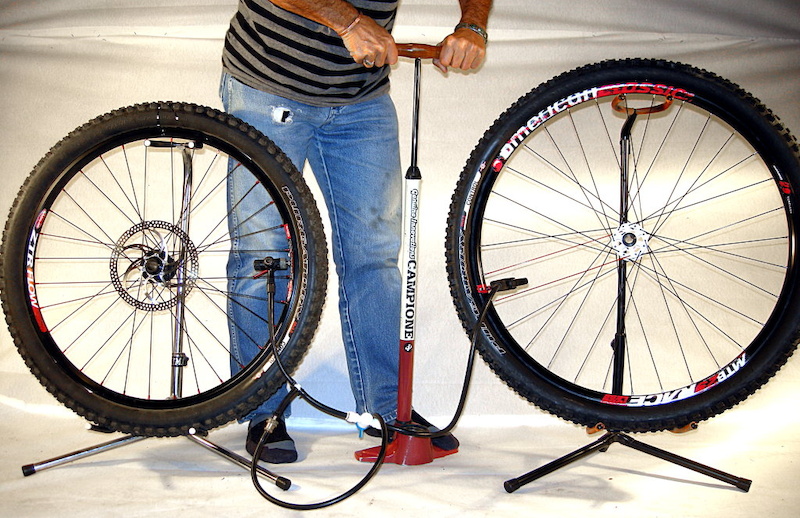 If your rims are pre-taped, lucky you! For the purposes of this guide, we are going to assume the rims are not taped and require a full setup.
If your rims are pre-taped, lucky you! For the purposes of this guide, we are going to assume the rims are not taped and require a full setup.
Before installing the tubeless tape, make sure your rims are very clean and dry and make sure that you have the correct size of tape for your rim’s internal width. Use isopropyl alcohol (which evaporates after doing its job) and a clean rag to ensure there is no dirt or oily residue left in the rim bed. Then, starting 5 cm to the left of the valve hole, carefully begin to apply the tape 12 cm (5”) at a time, taping clockwise and maintaining constant force to ensure the tape is under tension. While maintaining tension, firmly press down the section you have just applied using your thumb. Repeat this process until you meet the start of the tape. Continue for one more section, overlapping the valve hole. Then, carefully cut the tape and press down firmly.
While maintaining tension, firmly press down the section you have just applied using your thumb. Repeat this process until you meet the start of the tape. Continue for one more section, overlapping the valve hole. Then, carefully cut the tape and press down firmly.
Locate the valve hole, and carefully puncture the tape using a pointy round pick (or similar). Using a round spike to create the valve hole ensures a clean circular puncture, as opposed to a knife or razor which cuts a long slice in the tape that is prone to splitting. Insert the valve into the rim and carefully push it through the valve hole, making sure the base of the valve sits flush with the rim tape. Then, add the valve lock-nut and tighten until it is finger-tight. Never use pliers or tools to do this job – you don’t want to be stuck mid-ride with a mechanical and an impossibly tight lock-nut or risk damaging your precious carbon rims.
Then, add the valve lock-nut and tighten until it is finger-tight. Never use pliers or tools to do this job – you don’t want to be stuck mid-ride with a mechanical and an impossibly tight lock-nut or risk damaging your precious carbon rims.
Before mounting the tire, make sure to check the orientation arrow on the sidewall. Sit one bead of the tire into the rim, and install one side of the tire. Pro tip: make sure to align your tire logo with the valve. Then, starting opposite the valve, push the other tire bead into the rim using both hands. By resting the rim on your legs or the floor you can push the tire bead deep into the rim. The closer you get to the valve, the harder it will get. Make sure that both tire beads are sitting as deep in the rim as possible – this gives you as much slack as possible to install the last part of the bead.
Make sure that both tire beads are sitting as deep in the rim as possible – this gives you as much slack as possible to install the last part of the bead.
The easiest and cleanest way to install tubeless sealant is by adding straight through the valve. In order to do this, you simply have to remove the valve core and squirt the sealant in using a sealant injector or nozzle bottle. Then just re-fit the valve core. Alternatively, the sealant can be added before the final section of bead is seated into the tire. We recommend 80-120 ml of sealant per tire. It’s not worth saving weight by using less sealant – skimping here will reduce the effectiveness of the system dramatically.
Step 5: inflating the tireSome tire and rim combinations will inflate easily using just a standard track pump. However, you may need a tubeless inflator pump for some combinations.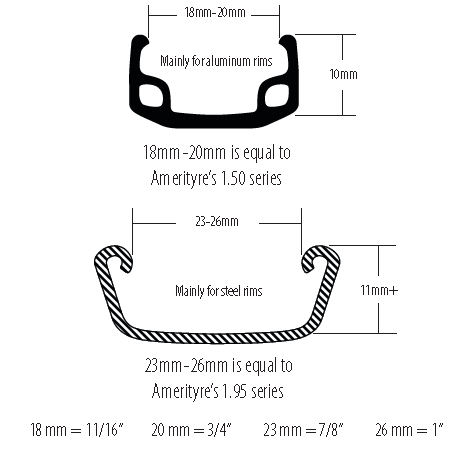
All that’s left now is to inflate your tire. Using a tubeless inflator pump makes this a lot easier. However, it is also possible to inflate some tire and rim combinations with a standard track pump. If your tire is being stubborn, you can remove the valve core to increase airflow. Once inflated, give the wheel a spin and a shake to make sure the sealant coats the inside of the tire evenly. Pro tip: take your bike for a short spin immediately after successfully inflating the tire to test the setup and let the sealant coat the tire.
Pump up the tire WITHOUT the valve core: this increases the airflow into the tire and has often worked miracles for us. Just remember to install the valve core immediately after removing the pump to prevent air loss. Even if you do lose most of the air, the tire bead will now be sitting perfectly in the rim bed and can easily be re-inflated.
Use some Schwalbe Easy-Fit or soapy water on the sidewalls: If the tire is putting up a fight, some soapy water or Schwalbe Easy-Fit will help the tire beads slip into place in the rim.
Use a tire booster or compressor: if your standard track pump is not doing the trick, a tubeless inflator or compressor will most certainly help to blast the tire into place. If in doubt, ask a friend or your local bike shop for help!
Use 2 layers of rim tape: this will make for a tighter fit between the tire and rim
CO2 and tubeless – do they work together?
While CO2 does help to re-inflate your tire in a pinch, it can also have negative long-term effects on your sealant. When CO2 is released from its pressured canister into the much bigger tire volume, a drastic drop in temperature occurs. This temperature drop activates the coagulant of some sealants, causing them to freeze and forming large balls of latex inside the tire. Rides just as bad as it sounds.
Rides just as bad as it sounds.
Is tubeless sealant bad for the environment?
Most tubeless sealants are based on natural or synthetic latex, which is degradable. However, each brand adds different additives and particles to their sealant to improve its performance. Therefore it is impossible to determine exactly how eco-friendly sealants are, as it varies from brand to brand.
Can I mix tubeless sealants?
We do not recommend mixing tubeless sealants, even if both sealants are latex-based. This is because different manufacturers use different additives and particles, which can cause coagulation and degradation of performance if mixed.
How do I get sealant residues off of my components?
If you get tubeless sealant on your rims, components or floor whilst setting up your tires simply wipe it up with a wet paper towel and clean the area with isopropyl alcohol.
Does the sealant evaporate over time?
Tubeless sealant can dry out over time, reducing its effectiveness. How fast it dries out depends on where you ride (how hot the climate is) and how often you ride. When sealant totally dries up it often forms a skin or spiky latex ball inside your tire, rendering it useless.
How fast it dries out depends on where you ride (how hot the climate is) and how often you ride. When sealant totally dries up it often forms a skin or spiky latex ball inside your tire, rendering it useless.
Check out our ultimate guide to tubeless if you want to learn everything there is to know about tubeless, from maintenance to repairs and more!
Did you enjoy this article? If so, we would be stoked if you decide to support us with a monthly contribution. By becoming a supporter of ENDURO, you will help secure a sustainable future for high-quality mountain bike journalism. Click here to learn more.
Words & Photos: Finlay Anderson
Outside's long reads email newsletter features our strongest writing, most ambitious reporting, and award-winning storytelling about the outdoors. Sign up today.
You’re railing that descent, nailing every line and feeling like a world champ, when suddenly you smash a wheel into a big square-edge rock. Quite literally, you can feel the air go out of the ride. Not much kills the stoke from a great spin quicker than a flat tire. This is why tubeless tires are increasingly popular for all kinds of cycling. These setups use a liquid sealant instead of an inner tube to hold air. As a result, they offer better protection against all kinds of flats and enable you to run lower pressures than tube-type systems, increasing traction and creating a more comfortable ride. In the event you do get a puncture, tubeless tires are also more likely to stay attached to the rim, which is safer.
Quite literally, you can feel the air go out of the ride. Not much kills the stoke from a great spin quicker than a flat tire. This is why tubeless tires are increasingly popular for all kinds of cycling. These setups use a liquid sealant instead of an inner tube to hold air. As a result, they offer better protection against all kinds of flats and enable you to run lower pressures than tube-type systems, increasing traction and creating a more comfortable ride. In the event you do get a puncture, tubeless tires are also more likely to stay attached to the rim, which is safer.
But ask most riders about going tubeless and you’ll encounter a litany of horror stories about setup. Why are some tubeless installs easy and others a multi-hour thrash session punctuated by merchant-marine levels of cursing? In short: manufacturing standards and tolerances. Wheels and tires from different brands vary ever so slightly in actual size, so a tire that fits great on one wheel is an overly tight nightmare on another. The good news is that this is slowly improving. Because manufacturing standards are getting better, with stricter tolerances, it’s now much more likely than even five years ago that you’ll be able to install and seat tubeless tires on the first try with a standard floor pump. Here’s a step-by-step guide.
The good news is that this is slowly improving. Because manufacturing standards are getting better, with stricter tolerances, it’s now much more likely than even five years ago that you’ll be able to install and seat tubeless tires on the first try with a standard floor pump. Here’s a step-by-step guide.
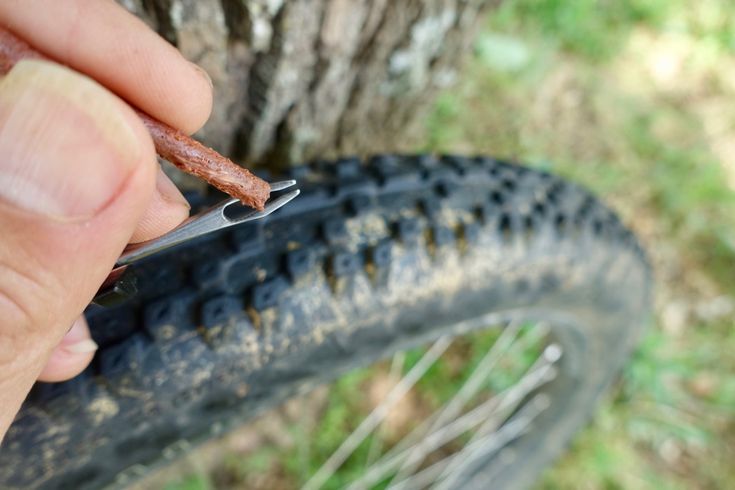 The bump prevents the bead from blowing off under pressure, and it reduces the likelihood that it can come loose if the tire goes flat.
The bump prevents the bead from blowing off under pressure, and it reduces the likelihood that it can come loose if the tire goes flat.
You’ll need tubeless-compatible or tubeless-ready wheels to start. This is governed by the rim profile itself (see the glossary, above). Most gravel and mountain-bike wheels these days are compatible; road bikes are not always so. But in any case, check manufacturer specs.
A warning: Do not under any circumstances try to make a wheel that is not listed as tubeless compatible into a tubeless system. If you’re lucky, all that will happen is the tire will blow off the rim in your garage and spray sealant everywhere. If you’re not lucky, the tire will hold just long enough for you to go on a ride, and then it will blow off, likely causing a crash. The same goes for tires: the bead on non-tubeless-ready tires will not hold securely in the bead lock and can blow off without warning.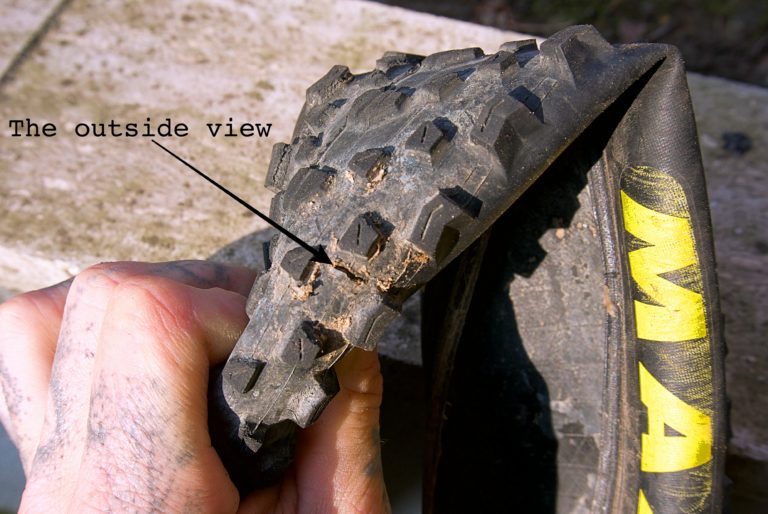
Many higher-end wheelsets are tubeless ready right out of the box. For others listed as tubeless compatible, you’ll need to seal the rim bed (namely the spoke holes) with airtight tape. Good brands are Silca, Stan’s NoTubes, and WTB. You’ll need to match the tape width to your rim width.
This special elixir typically features very small solid particles of rubber or latex in a liquid suspension. When you’re riding, the particles slosh around the inside of the tire, where they find and plug small leaks. Good bets are Muc-Off, Orange Seal, and Stan’s. Buy an 8-to-16-ounce bottle. Sealant doesn’t dry out in the bottle over time like it does in tires, and you may want some extra in case the initial installation doesn’t go smoothly. Some bottles of sealant come with a measuring cup; if yours doesn’t, you’ll need a cup that has measurement markings in ounces.
Tubeless tires use special valve stems that create an airtight seal on the inside of the rim bed to prevent air loss. The rubber grommet that forms the seal sometimes has to be matched to the profile of your wheel’s rim bed (so-called universal valves claim to work with almost any system). The best valves have removable cores. Industry Nine, Muc-Off, and Stan’s make good universal valves with removable cores.
The rubber grommet that forms the seal sometimes has to be matched to the profile of your wheel’s rim bed (so-called universal valves claim to work with almost any system). The best valves have removable cores. Industry Nine, Muc-Off, and Stan’s make good universal valves with removable cores.
The sealant’s job is to plug holes, but it won’t seal a non-tubeless tire. More important: non-tubeless tires don’t have the specially shaped bead to lock to the rim. We’ll steer clear of recommendations here. Tires are personal and, for gravel and mountain-bike riding especially, the best choices are highly geography- and conditions-specific. Ask around for what others in your area use and trust.
You’ll need a floor pump, sturdy plastic tire levers, a valve-core remover (a very small and inexpensive wrench), a clean rag, a small paintbrush, some rubbing alcohol, and an old cup for soapy water.
These are big syringe-like devices that install the sealant directly through the valve stem.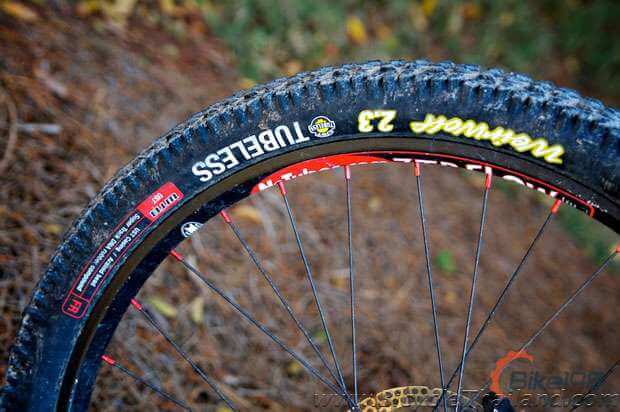 They’re fairly affordable ($10 to $30) and long-lasting. They’re also easy to use and much less likely to spill than the simple plastic measuring cup that comes with most bottles of sealant. Some have a needlelike attachment that can also be used to pull sealant back out of tires—useful if you’re swapping tires or want to store a bike for winter without letting the sealant congeal. Stan’s makes a basic system, but I prefer the KOM or Mil-Kit versions (note: Mil-Kit’s system is more expensive but comes with universal valve stems).
They’re fairly affordable ($10 to $30) and long-lasting. They’re also easy to use and much less likely to spill than the simple plastic measuring cup that comes with most bottles of sealant. Some have a needlelike attachment that can also be used to pull sealant back out of tires—useful if you’re swapping tires or want to store a bike for winter without letting the sealant congeal. Stan’s makes a basic system, but I prefer the KOM or Mil-Kit versions (note: Mil-Kit’s system is more expensive but comes with universal valve stems).
These are basically reusable air chambers that you pressurize with a floor pump, then place over the valve stem and use to inflate the tire quickly. They’re helpful because seating tubeless tire beads to the rim often requires a high volume of air delivered fast, and floor pumps can struggle to do that. Brands include Airshot, Mil-Kit, and Specialized. But these items are designed for one task only, which may not justify the price ($50 to $100) if you use them rarely.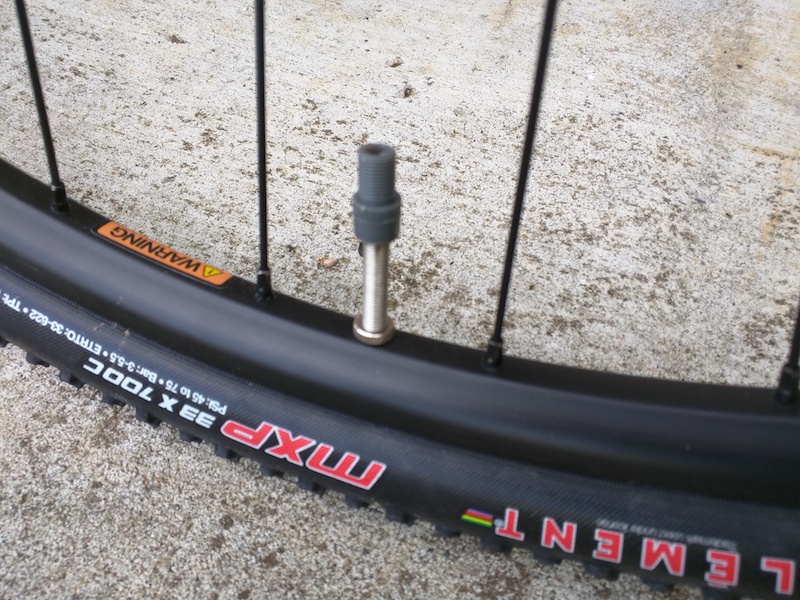 If you’re only installing tubeless tires on rare occasions, you can also use a conventional CO2 inflator system to seat beads. Many people use standard air compressors of the sort you need for home-improvement projects.
If you’re only installing tubeless tires on rare occasions, you can also use a conventional CO2 inflator system to seat beads. Many people use standard air compressors of the sort you need for home-improvement projects.
Tools: Rag, rubbing alcohol
Whether you’re working with new wheels or ones you’re converting, make sure they’re clean. Dip a rag in rubbing alcohol, and thoroughly wipe down the rim bed, rim tape, and internal sidewalls. Pay special attention to removing any debris from the bead hook, where the tire will seat. Check to ensure that the tape is even and tight, with no wrinkles or gaps that could leak air. Wipe dry.
Tools: Tire lever, floor pump, tube
That’s right: use a tube first. Why? It’s an easy way to get at least one of the tire beads firmly seated to the bead lock and to work out the kinks in a tire bead after it’s sat folded in storage.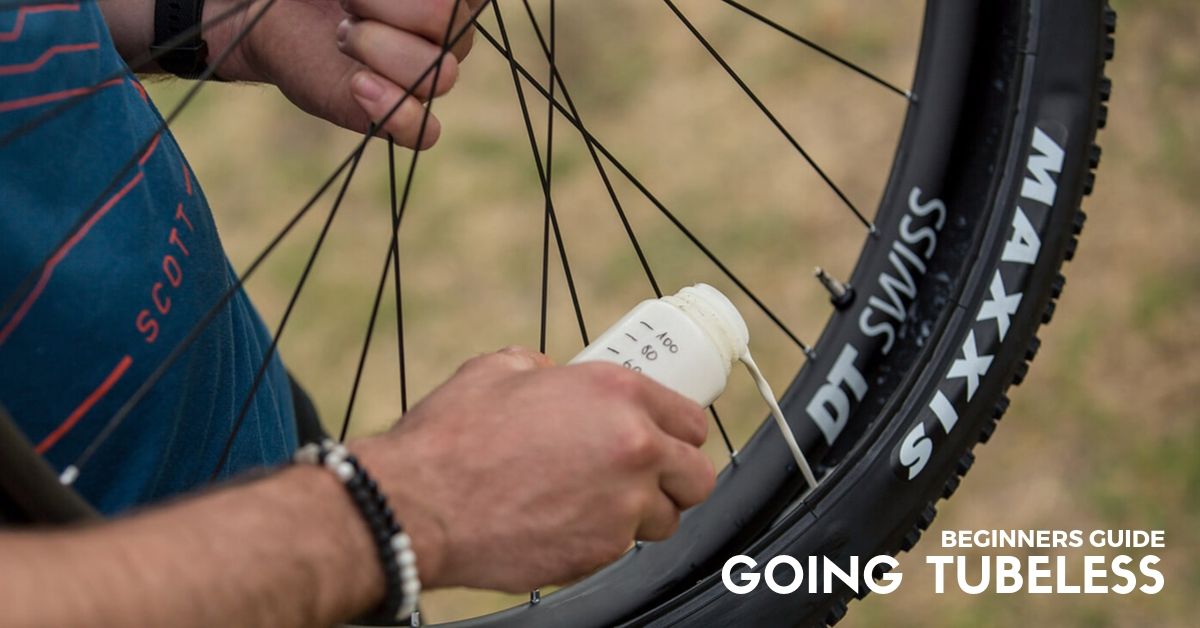
Unfold the new tire, and seat one side in the rim bed. Many tires, especially mountain-bike tires, are directional or even front- or rear-specific; check to make sure it’s in the proper orientation before installing. Tip: line up the center of the tire logo over the valve stem, as this can make it easier to find and fix leaks on rides.
Inflate an inner tube just enough that it holds shape. Insert the valve in the rim’s valve hole, and tuck the tube into the tire. Finally, deflate the tube a bit, and install the other side of the tire. The bead will likely be tight in the last quarter or so. Use a tire lever, and carefully lift the bead into the rim well, taking care not to pinch the tube between the tire and rim. Once seated, push the tire bead toward the center of the rim bed, and visually check to make sure the tube isn’t pinched.
Inflate the tire, stopping at about 20 psi to make sure that the tire bead isn’t bulging out over the rim in any location. Resume pumping to a few psi short of the maximum inflation listed on the tire sidewall. You’ll hear some snaps and pops. This is normal; it’s the tire bead seating in the rim lock. Finally, set the wheel in a warm, sunny location for 15 to 20 minutes. The heat softens the kinks in the tire bead, and—if you’re setting up wheels for tubeless for the first time—helps ensure that the rim tape’s adhesive is fully bonded to the rim and won’t leak.
You’ll hear some snaps and pops. This is normal; it’s the tire bead seating in the rim lock. Finally, set the wheel in a warm, sunny location for 15 to 20 minutes. The heat softens the kinks in the tire bead, and—if you’re setting up wheels for tubeless for the first time—helps ensure that the rim tape’s adhesive is fully bonded to the rim and won’t leak.
Tools: Tire lever
Take the wheel out of the sun, and let it cool back to room temperature. Deflate the tire. Carefully push only one side of the tire into the rim bed, then use the tire lever to lift that bead off the rim. Remove the tube, leaving the other tire bead seated in the rim.
Install the tubeless valve by threading the knurled nut as tightly as it’ll go with your fingers. Don’t use a wrench or pliers; overtightening could crack the rubber gasket on the valve stem and cause a leak. Make sure the valve you’re using fits the rim-bed profile (see “What to Buy,” above). A poor fit could leak.
Make sure the valve you’re using fits the rim-bed profile (see “What to Buy,” above). A poor fit could leak.
Tools: Tire lever, tire sealant, measuring cup or injector, valve-core remover
If you’re using a sealant-injector system: Reinstall the loose tire bead, taking care not to dislodge the bead on the other side of the tire. Use the valve-core remover to unthread the core counterclockwise, then remove it and set it aside. Shake the sealant bottle for 10 to 20 seconds to thoroughly mix its contents, then measure out the appropriate amount for your tire size into the injector chamber:
Two ounces for road tires (up to about 28 millimeters)
Three ounces for 700c gravel or 27.5 mountain tires
Three to four ounces for most 29er mountain tires
Five to six ounces for plus-size mountain-bike tires
Seat the injector securely on the valve stem (or push the needle fitting through the valve stem), and then carefully inject the sealant into the tire.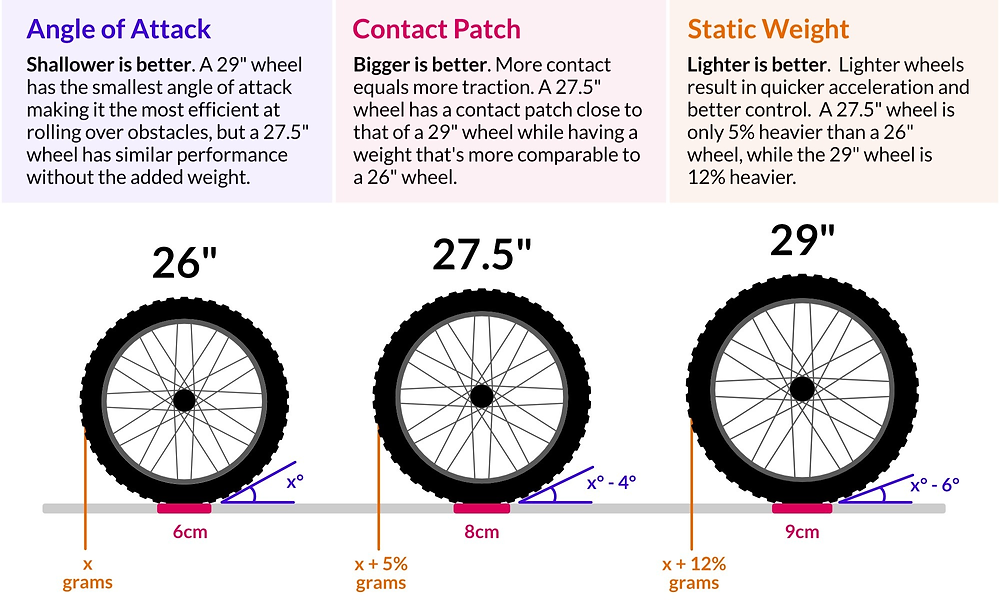 Reinstall the valve core.
Reinstall the valve core.
If you’re just using a sealant cup: Don’t worry about removing the valve core, since you’re not using it to add sealant. Reinstall the loose tire bead, but leave a final section unmounted. Prop up the wheel with this section closest to the ground but the opening tilted upward to prevent spillage. Shake the sealant bottle for 10 to 20 seconds to thoroughly mix its contents, then pour the appropriate amount into the cup, and carefully pour that directly into the tire at the unmounted section. Grab the wheel and gently rotate the unmounted section up to 12 o’clock, so that the sealant flows into a fully mounted section of the tire where it’s less likely to leak out, and wrestle the final section of tire bead onto the rim (you may need the tire lever).
Tools: Floor pump, soapy water, small paintbrush
Seating tubeless tires takes a lot of air rushing into the tire very fast to seat the tire bead into the rim lock. You might be able to do this with a floor pump, but you may need a higher-volume air source.
You might be able to do this with a floor pump, but you may need a higher-volume air source.
Take the paintbrush and dip it in the soapy water, then run it along the tire sidewall where the loose tire bead and rim bead lock meet. The soapy water helps the tire bead slip into place more easily.
If you’re using a floor pump: Because you’ve already seated one side of the bead, you may be able to inflate the tire with a floor pump. It takes some effort and maybe a little luck. First, thread the wheel skewer or axle through the hub—that provides something to grab as you spin the wheel to disperse sealant. Then firmly seat the pump chuck on the valve stem (making sure the stem core is fully open), and pump full strokes as fast as you can to get the installed but unseated tire bead into the rim’s bead lock. Again, you’ll hear those telltale snaps and pops. If you hear that, keep pumping! Pump to a few psi short of the maximum inflation listed on the tire sidewall. Quickly remove the pump chuck, grab the quick-release lever on the wheel skewer or axle, and spin the wheel for a minute or so, rotating the axis back and forth. This helps distribute the sealant evenly inside the tire. If you see sealant spraying out anywhere for more than a few seconds, stop; the tire’s not fully seated. Also: if you are pumping quickly for at least 30 seconds but the tire won’t hold any air, stop; the tire likely won’t seat with just a floor pump.
Quickly remove the pump chuck, grab the quick-release lever on the wheel skewer or axle, and spin the wheel for a minute or so, rotating the axis back and forth. This helps distribute the sealant evenly inside the tire. If you see sealant spraying out anywhere for more than a few seconds, stop; the tire’s not fully seated. Also: if you are pumping quickly for at least 30 seconds but the tire won’t hold any air, stop; the tire likely won’t seat with just a floor pump.
Secondary protocol: If you can’t get the tire bead to fully lock in the rim, you’ll need a higher volume of air delivered faster. This is where the CO2 cartridge inflator you normally use for trailside-flat repairs comes in or the special tubeless-inflation systems we mentioned above. Another option is a pump with integrated booster chambers, like the Bontrager TLR Flash Charger or the Topeak JoeBlow Booster, although these get mixed reviews.
In any case, the process is basically the same with a booster or combo pump: charge the booster chamber, securely fasten the inflator chuck around the valve stem, then release the air into the tire.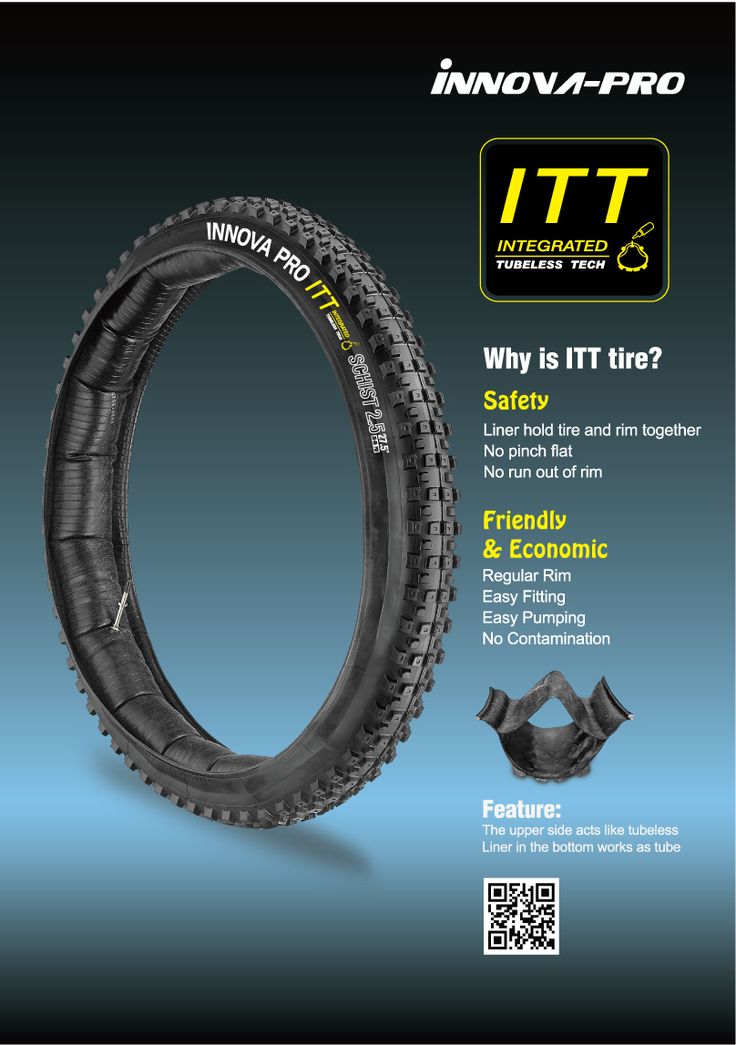 If you’re using a CO2 inflator, use the largest cartridge you can find for mountain tires (up to 20 grams). If the CO2 cartridge successfully seats the bead, it may still not be at the full pressure needed to ensure a complete seal to the system. Remove the inflator, and switch to the floor pump, topping off the pressure to a little less than the listed maximum sidewall pressure.
If you’re using a CO2 inflator, use the largest cartridge you can find for mountain tires (up to 20 grams). If the CO2 cartridge successfully seats the bead, it may still not be at the full pressure needed to ensure a complete seal to the system. Remove the inflator, and switch to the floor pump, topping off the pressure to a little less than the listed maximum sidewall pressure.
Something to consider: stand-alone tubeless boosters cost $50 or more. Booster and pump combos cost $120. Pancake-style air compressors start at $99, plus $30 or so for a Presta attachment.
Whichever method you use, once the tire seats, grab the wheel by the quick-release or through-axle lever, and spin it to disperse the sealant inside. Success? Awesome. Check for obvious sealant leaks at the sidewall and valve stem. If you don’t see any, install the wheel on the bike, and ride slowly around the neighborhood—this helps the sealant foam and plug any microscopic hole in the system. Leave the tire inflated at the higher pressure, which helps ensure that the tire stays sealed.
If this process didn’t work, the problem may not be something you can fix at home. In that case, we recommend going to a shop.
Many cyclists are used to the telltale hissing sound coming from tires. At any moment, your high-tech mountain bike can be put out of action by a simple thorn or a small piece of pebble.
Since the advent of pneumatic tires, this problem has haunted cyclists, tiring with the frequency of punctures and the amount of work needed to fix them. And only recently, bicycle tire and rim manufacturers have decided to create a universal tubeless system (UST). nine0003
This system is a sealed rim in which the holes for the spokes and the nipple are completely airtight. Also, the non-porous rim sidewalls have improved grip on tire walls that are thicker than conventional tires. During tire inflation, the air presses the tire bead (lower edge of the sidewall) into the corresponding groove in the rim flange, thereby sealing the contact between the tire and the rim.
Theoretically, the advantages of a tubeless tire include low weight (due to the lack of a tube, although tubeless tires are heavier than conventional tires), less pressure (providing better grip) and the absence of pinch punctures (also known as "snake bites"). If you add some sealant to the system, then penetrating punctures will also be a thing of the past. nine0003
But what about a cyclist with conventional rims without sealing? Just buy a conversion kit, tubeless or Tubeless Ready tires and he can send his bike tubes to the dustbin of history.
Of course, you can only add sealant to a conventional chamber. In this case, you won't gain any weight or grip advantage, just add a little weight to the wheels, but it will help you avoid punctures and not spend money on new tubeless tires and a tubeless conversion kit. Read our guide to using Gremetic in chambers. nine0003

Remove the wheels, tires and tubes from the bike. If the wheels are old, greasy and dirty, clean them with hot soapy water or alcohol. The rubber tape will need to be taped to the spoke bed of the rim, so the rim needs to be clean and free of dirt so that the tape is snug against it. nine0003
Take the rim tape and unfold it so that the nipple is on the inside of the tape. Run your fingers around its circumference and check it for cuts, nicks, bulges, and proper molding that could cause air to leak. Even if the tire drops a few psi in a day, it can be very annoying.
Position the part of the rim tape with the nipple in the spoke bed, gently push the end of the nipple through the hole provided for it and pull it out the other side.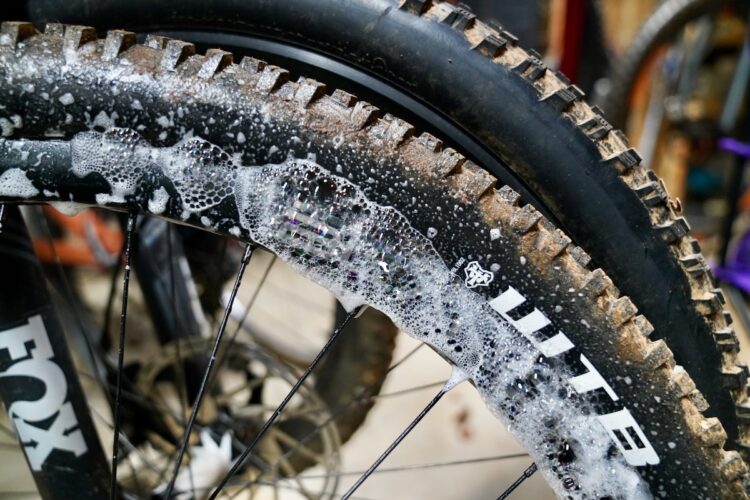 The piece of tape near the nipple is slightly thicker and therefore difficult to install correctly, but it is important to install it correctly now so that you do not have to look for the source of leaks later. nine0003
The piece of tape near the nipple is slightly thicker and therefore difficult to install correctly, but it is important to install it correctly now so that you do not have to look for the source of leaks later. nine0003
Next, you need to install the remaining section of the rim tape in the spoke bed. This is easier said than done as the tape is tight against the rim. The easiest way to install it is with a screwdriver with a long thin handle. Position the screwdriver perpendicular to the rim between the rim and the rim tape. Slowly moving the screwdriver around the circumference of the rim, set the rubber band evenly in the spoke bed.
First of all, make sure you have a working nipple that does not let air through. Most nipples have a special threaded lock washer that screws onto the nipple body. The nipple usually comes with a rubber o-ring that needs to be installed between the lock washer and the rim. By flattening the O-ring, you will create an additional seal on the outside of the hole. nine0003
nine0003
Now that the rubber rim is in place and lying in the center of the rim, you need to check the uniformity of its tension throughout the entire length of the rim. Air can leak between the rim and the rim tape if there are loose or tight areas on the tape. Again go around the rim with a screwdriver and equalize the tension of the tape. This will take a few minutes.
Tires from different manufacturers or even different models from the same manufacturer differ in installation complexity, quality and other characteristics. If the tires were not installed on the wheel, then first install them as usual with tubes, inflate to the maximum recommended pressure and leave them overnight. After that, they will be much easier to install and pump. nine0003
Place the wheel on your feet so that the nipple is at the highest point of the wheel (at 12 o'clock).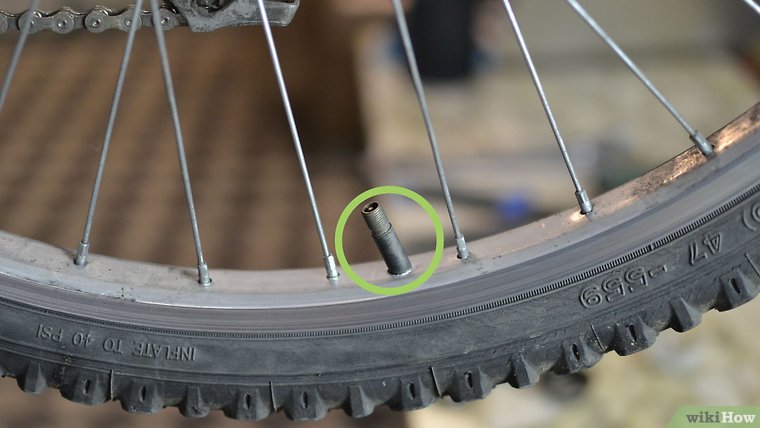 First, place the tire beads near the nipple, then walk with both hands around the circumference of the tire (in different directions), loosening the bead over the rim wall along the way. Once you get to the very bottom of the wheel, leave an 8-inch section.
First, place the tire beads near the nipple, then walk with both hands around the circumference of the tire (in different directions), loosening the bead over the rim wall along the way. Once you get to the very bottom of the wheel, leave an 8-inch section.
Some sealants can be applied without removing the nipple core, the spring-loaded piece that screws into the nipple body and allows air to enter the tire without escaping, but most cannot. Sludge Sealant can be injected without removing the core of the nipple. Removable core nipples are included in many conversion kits, but not all. The core must be unscrewed and removed. Be careful not to lose it as it can easily roll over furniture on the floor. If you have a nipple without a core to be removed, then immediately go to step 12.
Now that you have completely seated the tire on the rim and removed the core of the nipple, you can inject the required amount of sealant into the tire using the narrow line nozzle.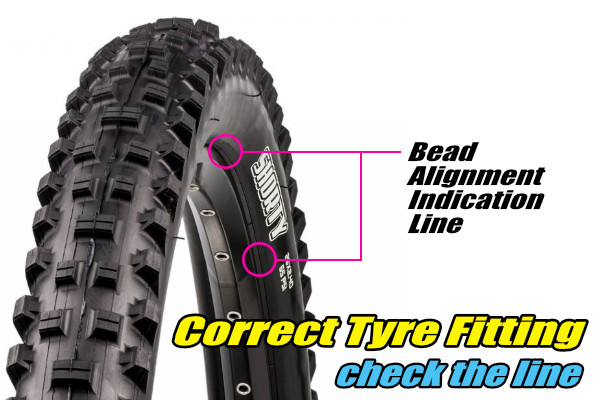 Shake the sealant bottle well before doing this.
Shake the sealant bottle well before doing this.
After the sealant has been poured through the nipple, screw the nipple core back. Before screwing in the core, it is recommended to lubricate its threads with petroleum jelly, which will reduce the likelihood of jamming of the core or difficulty in turning it. nine0003
If you don't want to or can't apply sealant through the nipple, leave a small section of the tire bead exposed on the rim and pour sealant through it. Use a bottle with a nozzle to infuse the sealant, as a natural rubber tire is difficult to keep its shape. Suspend the wheel carefully so as not to spill the sealant from the tire.
To install the last section of the tire, carefully rotate the wheel so that the uninstalled section is on top. Now you can let the sealant spread all over the tire. Do not worry if a little sealant still leaks. nine0003
nine0003
Start inflating the tires with the car pump until the tire beads press against the rim. When the pressure is too high (about 60 - 80 psi for UST tires and Tubeless Ready tires), the tire beads should click into place with a characteristic "clicking" sound. Be careful when handling this high pressure. Your tires are now tubeless.
Air can escape between the rim and tire. Raise the wheel, take it by the tire like you are holding a tray. Shake the wheel well so that the sealant spreads throughout the tire, reacts with the air and creates a thick sealing layer. Even if you skip this step, over time, the sealant will still spread on its own. Leave the wheel for 15 minutes, then repeat this step again. Air leakage should stop. nine0003
Hold the wheel up to your ears and listen carefully for air leaks. If a leak is found, then it is most likely a microscopic hole. Repeat step 15 and/or add more sealant.
The carcass of the UST tire is impregnated with special rubber to retain air. Tubeless Ready tires have thinner walls, which means they are lighter and less airtight.) They have a dockable bead needed to install them as tubeless. At the same time, Tubeless Ready tires can only be used as tubeless tires in conjunction with liquid sealant, but we still recommend buying UST tires. Theoretically, with the help of sealant, you can use both tubeless and conventional tires, but you can only install them correctly by trial and error. nine0003
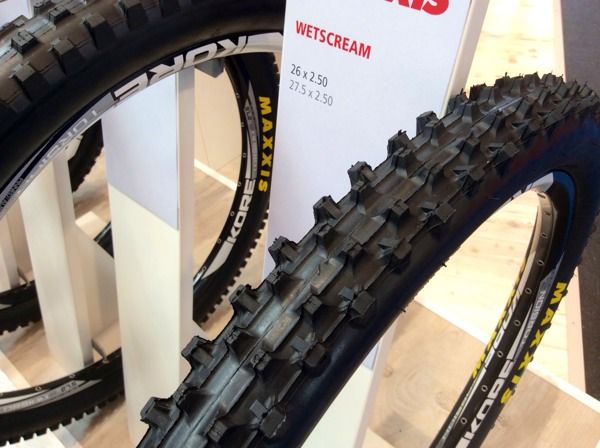 Inflate the tire to the recommended pressure. nine0018
Inflate the tire to the recommended pressure. nine0018 The rim tape protects the tube from burrs inside the rim, sharp edges of the spoke holes, from being punctured by the ends of the spokes, seals the rim for tubeless tires. There are different types of tapes: textile, rubber and polymer. Choose the one that best suits your bike rims and follow these simple instructions...
Of course, this is not the most important thing in a bicycle, but it is useful.
What you need:
The rim must first be cleaned.
Take the tape and make sure it is rotated correctly, sometimes these tapes have an inside and outside surface. Align the nipple hole in the band with the nipple hole in the rim.
Align the nipple hole in the band with the nipple hole in the rim.
The tape will slide along the rim during putting on. To avoid this, insert the shank of a screwdriver through the aligned holes of the band and rim. nine0003
As you go around the rim, starting from the nipple hole, pull the tape well so that the edges will curl and the tape will become narrower, this will make it easier to fit into the base of the rim.
The last section is very awkward to use with your fingers, a second screwdriver can help. When there are 15 centimeters left, slide the screwdriver shaft under the tape and use it to put the last piece in place. After the tape settles into the base of the rim, run a screwdriver around the outer edge of the rim (as shown in the photo) to equalize the tension of the tape around the rim. Remove the fixing screwdriver from the nipple hole, carefully pry out the one used for installation and align the tape. nine0003
Inspect the band to make sure it sits flat on the rim and doesn't climb up the sidewalls - it's very important when buying to choose the right band for your bike's rim width.
Cloth tape with adhesive backing is available in rolls of various widths. It's probably the easiest to put on.
As with the ring tape, start by lining up the holes for the nipple.
You should try to pull the tape fairly hard and evenly, then it will stick well to the bottom of the rim. nine0003
The tape roll is longer than the rim, so cut off the excess with sharp scissors. You can cut it so that it overlaps, but it is better if the ends are tightly aligned with each other.
It will not have a pre-cut hole for the nipple, you will make it yourself. Start at the nipple hole in the rim, close it, and move around from there.
The tape must fit snugly and evenly on the bottom of the rim, as it will seal. You can make a second turn of tape around the rim, then the tire will fit snugly. Trim the edge carefully. nine0003
Iron the tape with your finger, making sure it adheres well to the rim, without air bubbles, wrinkles or creases.